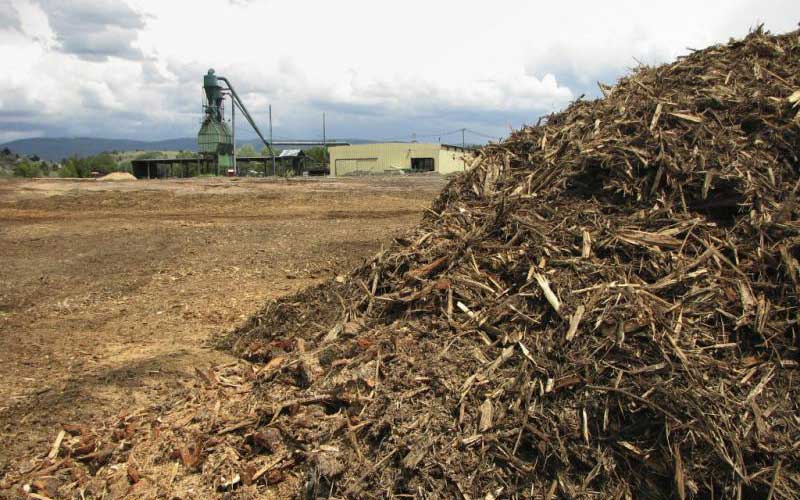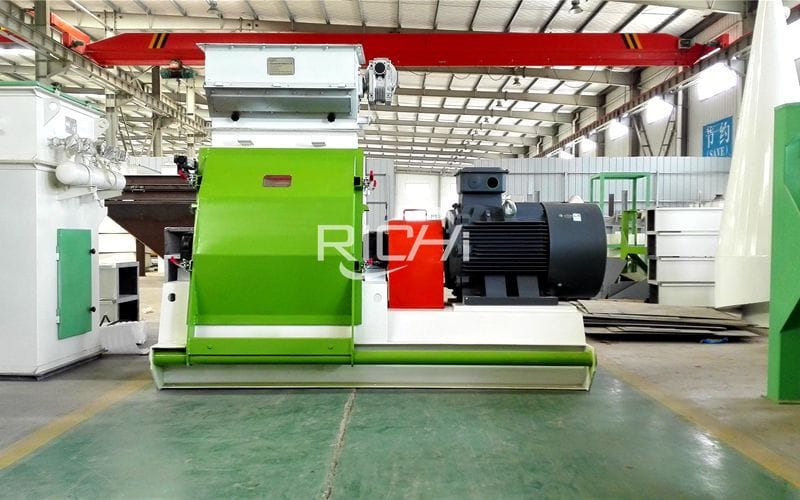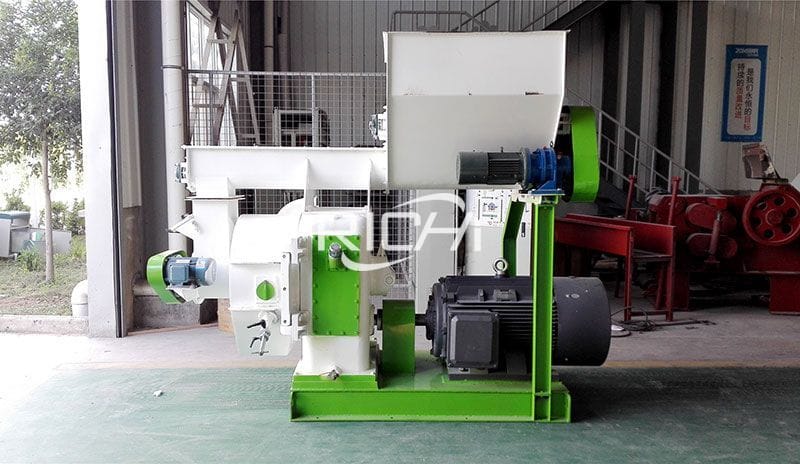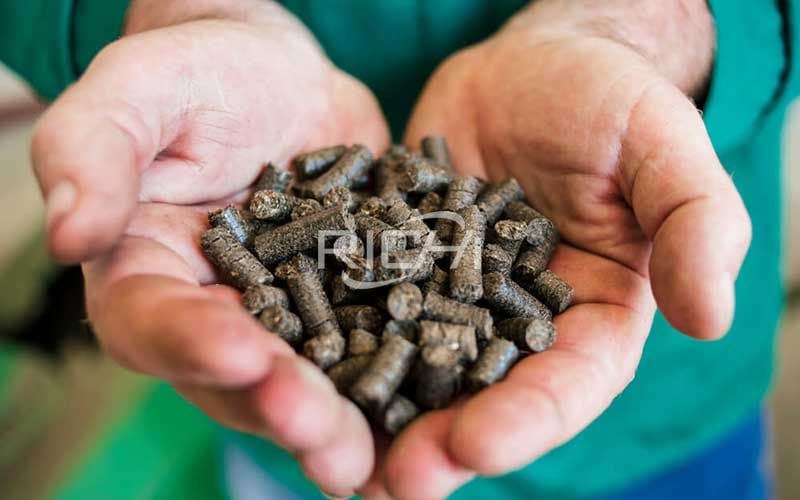
This is where you find all our press releases and news articles.
Biomass pellets are a popular type of biomass fuel, generally made from wood wastes, agricultural biomass, commercial grasses and forestry residues. Dense cubes pellets have the flowability characteristics similar to those of cereal grains. High density of pellets also permits compact storage and rational transport over long distance. In addition to savings in transportation and storage, pelletization of biomass facilitates easy and cost effective handling. Pellet-making equipment is available at a variety of sizes and scales, which allows manufacture at domestic as well industrial-scale production. Pellets have a cylindrical shape and are about 6-12 mm in diameter and 3-30 mm in length.Pellets are extremely dense and can be produced with a low moisture content that allows them to be burned with very high combustion efficiency.

Wood and Plant Residues Waste
The biomass pelletization process consists of multiple steps including raw material pre-treatment, pelletization and post-treatment. The first step in the pelletization process is the preparation of feedstock which includes selecting a feedstock suitable for this process, its filtration, storage and protection. Raw materials used are sawdust, wood shavings, wood wastes, agricultural residues like straw, switchgrass etc. Filtration is done to remove unwanted materials like stone, metal, etc. The feedstock should be stored in such a manner that it is away from impurities and moisture. In cases where there are different types of feedstock, a blending process is used to achieve consistency.
The moisture content in biomass can be considerably high and are usually up to 50% – 60% which should be reduced to 10 to 15%. Rotary drum dryer is the most common equipment used for this purpose. It should be noted that the feedstock should not be over dried, as a small amount of moisture helps in binding the biomass particles. The drying process is the most energy intensive process and accounts for about 70% of the total energy used in the pelletization process.
(1) Fragmentation: Use a fragmentation machine to break the incoming wood and plant waste residues into small pieces.
(2) Crushing: Use a wood and plant waste residues crusher to crush the broken agricultural waste residues into small particles that meet the requirements.

hammer mill crusher
(3) Drying: The crushed particles are dried. The average water content of the raw materials purchased in this project is about 20%, and it needs to be dried to 5% before production. The rotary drum drying machine is used in this project. Biomass hot air stove, the fuel is biomass pellets, and the temperature of the dryer is controlled at 150-250℃.
(4) Granulation: The dried granules are conveyed to the agricultural waste residues wood pellet mill pelletizer through the conveyor for granulation, and the finished product is made by extrusion molding. The extrusion process is a physical process without any adhesive and no chemical reaction.

wood and plant residues waste pellet mill pelletizer
(5) Inspection: The unformed or unqualified particles are screened out by the screening machine, and this part of the particles enters the crushing device to be reused without discharge.
(6) Packing and warehousing: the products that have passed the inspection are packed and put into the warehouse.

Having the right mix of reliable, high-quality pellet machine and pelletizing systems and expert support is essential to your success. Watch how our end-to-end feed pellet plant solutions have helped our customers optimize their performance.
Our customized and future-proofed turnkey pellet plant solutions is designed with you at the core. From vision to reality and beyond, our team stays connected with yours. Giving you peace-of-mind with an expert at your side.

At RICHI, we go beyond project completion. With RICHI Servicee, we’re your dedicated partners in success. Count on us for expert guidance, minimal downtime, and optimized productivity. Choose RICHI for unmatched service and support.



Meet global product demands and quality standards with industry-leading pellet plant design, engineering, equipment, and construction services for pellet processors.


Your Partner Beyond Project Completion
2000+ cases
RICHI is the leading designer, manufacturer and builder of pellet plants in the world, completing over 2000 projects in 140 countries across 6 continents.
Read More
Increase plant productivity, profitability, and safety by integrating high quality equipment into your pellet production line. Over the years, RICHI has become China's top pellet equipment manufacturer. At the same time, RICHI has established valuable partnerships with the world's leading component and raw material manufacturers to bring you the best there is in technology, automation, and efficiency in pelleting plant machinery.

For nearly 30 years, RICHI has been providing best-in-class pellet plant equipment and services to clients across a variety of industries, sizes, and needs. We pride ourselves on the knowledge and skill that each team member possesses – from our technical sales team to our process design engineers. You can count on RICHI Machinery to take your operation to the next level of innovation, quality, and success.
Need help with your pellet manufacturing plant project? Contact us today.
ANIMAL FEED
BIOMASS
WOOD
ORGANIC FERTILIZER
AQUA FEED
CAT LITTER
MUNICIPAL WASTE RECYCLING
SPECIAL PELLET PRODUCTION
RICHI Machinery continues to deliver world class pellet mill equipment, pellet plant engineering and project solutions that add value to our customers in the animal feed, wood waste, agriculture waste, organic fertilizer, cat litter and special pellet products industries. Throughout the years, we RICHI Machinery have built strong brand, becoming industry-leading pellet machine manufacturer. We value integrity, promise quality, and prioritize your success.
Learn MoreWith our expert team, we precisely implement your process engineering requirements in pellet mill and pelletizing plant systems. No matter which industry you’re in – we understand your needs and deliver solutions that meet the highest standards.
At RICHI, quality comes first. Our pellet making machine and related pellet line equipment undergo rigorous quality controls to ensure they meet the highest standards. Rely on products that are durable, safe, and efficient.
With decades of experience in pellet machine and pellet production line production, we have earned a reputation as a trusted partner in various industries. Our expertise allows us to cover a wide range of applications.
Not only do we offer premium pelleting equipment, but we are also experts at designing, building, installing, and maintaining facilities from the ground up. Our expertise is within pellt plant process design, discovering the most efficient, productive, and profitable way to handle your materials in an end-to-end cycle.

Keeping in touch with us is an effective way to solve all your problems. If you have any needs or questions, please leave your contact information, then RICHI technical consultants will send design, quotation, videos to your mailbox. You can also contact us directly via WhatsApp: +86 13838389622
Copyright©2015-2024 by HENAN RICHI MACHINERY CO., LTD. All rights reserved.